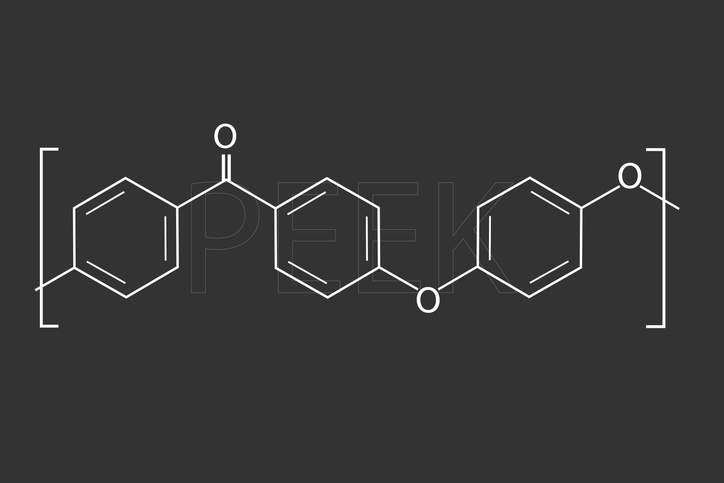When plastic parts need to maintain a high level of performance under extreme conditions, few materials stand out more than PEEK. PEEK, or Polyetheretherketone, is a high-performance thermoplastic that is widely used in multiple industries due to its exceptional mechanical properties. However, in order to fully leverage PEEK mechanical properties in critical applications, there are several aspects of part design manufacturers take into consideration. Let’s take a closer look at the properties of PEEK and how injection molders specifically approach part design to take full advantage of this unique material.
An Overview of PEEK Mechanical Properties
PEEK is known for exhibiting superior mechanical properties in a number of areas, including:
- High temperature resistance—With a melting point of 343℃, PEEK is an extremely suitable material for applications where exposure to heat is a concern. Thanks to its melting point, it can retain its shape and other mechanical properties at elevated temperatures.
- Strength and stiffness—PEEK is known for its high levels of strength and stiffness. In fact, in this regard, it’s comparable to aluminum, which makes it ideal for structural applications where rigidity and strength are essential.
- Chemical resistance—With high resistance to a number of chemicals, including acids, solvents, and bases, PEEK is often a go-to material for applications that involve aggressive chemical environments.
- Wear resistance—PEEK exhibits good wear resistance, which is needed in applications where parts experience friction abrasion. This characteristic contributes to PEEKs durability and longevity.
- Low friction coefficient—PEEK also has a low friction coefficient, making it ideal for applications where reduced friction is required. Think bearings and seals.
- Creep resistance—Materials tend to deform slowly under a constant load over time. This is called creep. PEEK has an extremely high resistance to creep, meaning it’s a great material where long-term stability is needed.
Designing Parts to Reap the Benefits of PEEK Mechanical Properties
When injection molders design parts with PEEK in mind, they generally consider the material’s unique properties to optimize performance and take full advantage of its benefits. Below are some of the major design and process considerations, and how they impact the quality of the final product.
Temperature Considerations
Because PEEK requires high processing temperatures, it’s important that injection molders ensure precise temperature control during the molding process. Proper heating of the mold and barrel is essential to melt the PEEK resin effectively and achieve optimal flow characteristics. Maintaining uniform mold temperatures also helps prevent warping and shrinkage in finished products.
Structural Design
The structural design of components can also be designed to best utilize PEEK mechanical properties. By carefully designing an appropriate wall thickness and geometry, molders can ensure the part maintains the required structural integrity while minimizing material usage. Not only does this help reduce material costs, but it also results in lighter weight parts that aid in reduced fuel and energy consumption in a number of applications.
Wear and Friction
To address wear and friction, injection molders can incorporate features that leverage PEEK’s wear resistance and low friction coefficient. This may involve utilizing surface finishes and textures to reduce frictional forces and mitigate wear over time. Molders can also include additives that lend the finished part self-lubricating properties to further enhance these characteristics.
Precision and Dimensional Stability
Injection molders can design parts with tight tolerances to take advantage of PEEK mechanical properties, specifically its excellent dimensional stability. By carefully controlling the molding process and tooling design, molders can achieve high levels of precision in dimensions and tolerances to ensure that the finished components meet specifications. This is especially critical in industries like aerospace and medical.
Creep Resistance
Finally, injection molders can design parts that take full advantage of PEEK’s creep resistance. To do this, molders will analyze application requirements and loading conditions to identify potential areas of concern. From there, they can incorporate design features like fillets, radii, or reinforcing ribs to further mitigate creep deformation over the long run.
Ensinger Leverages PEEK Mechanical Properties for High-Performance Components
At Ensinger, we offer custom injection molding solutions for our customers in a wide range of industries. And while we work with a variety of materials, including general industrial and engineering-grade polymers, our speciality lies in manufacturing plastic components made from high-performance materials like PEEK. If you need high-quality plastic parts that perform over the long-term, connect with our team today.
